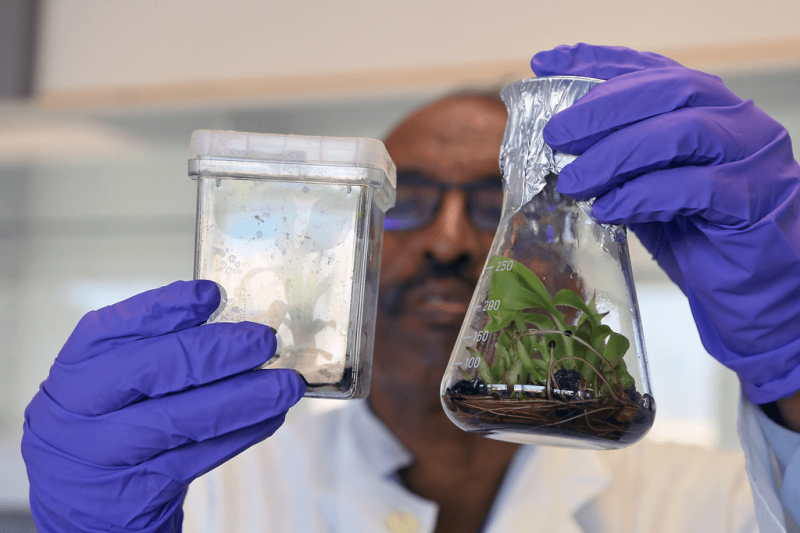In the quest for sustainable agriculture and food security, AI-driven plant breeding has been heralded as a game-changing solution. The adoption of machine learning and generative AI has progressed at an incredible pace, transforming various industries – and agriculture is no exception. Genomic sequencing and machine learning are already being used by companies to identify crops with desirable traits, and climate resilient varieties of these crops, in pursuit of food security. This process accelerates the traditional plant breeding approach, which typically relies on time-consuming and resource-intensive phenotyping and crossing of plants.
With respect to the question of climate resilience, AI undoubtedly holds great promise and potential for quick and cost-efficient adaptation to a rapidly changing global climate. However, if proposed technological solutions are not subject to intense scrutiny, there is a risk of exacerbating social inequality and environmental damage. Technological advances like generative AI and CRISPR have the potential to vastly improve human health and well-being, but these technologies are not neutral. Furthermore, if we do not yet trust in the capabilities of generative AI to provide us with accurate information without hallucination, we should at the very least exercise extreme caution when using it in the production and replication of biological material.





















 Viewpoint — Fact checking MAHA mythmakers: How wellness influencers and RFK, Jr. undermine American science and health
Viewpoint — Fact checking MAHA mythmakers: How wellness influencers and RFK, Jr. undermine American science and health Viewpoint: Video — Big Solar is gobbling up productive agricultural land and hurting farmers yet providing little energy or sustainabilty gains
Viewpoint: Video — Big Solar is gobbling up productive agricultural land and hurting farmers yet providing little energy or sustainabilty gains Fighting deforestation with CO2: Biotechnology breakthrough creates sustainable palm oil alternative for cosmetics
Fighting deforestation with CO2: Biotechnology breakthrough creates sustainable palm oil alternative for cosmetics Trust issues: What happens when therapists use ChatGPT?
Trust issues: What happens when therapists use ChatGPT? California, Washington, Oregon forge immunization alliance to safeguard vaccine access against federal undermining
California, Washington, Oregon forge immunization alliance to safeguard vaccine access against federal undermining 30-year-old tomato line shows genetic resistance to devastating virus
30-year-old tomato line shows genetic resistance to devastating virus The free-range chicken dilemma: Better for birds, but with substantial costs
The free-range chicken dilemma: Better for birds, but with substantial costs ‘You have to treat the brain first’: Rethinking chronic pain with Sanjay Gupta
‘You have to treat the brain first’: Rethinking chronic pain with Sanjay Gupta
